#succession featurette
Explore tagged Tumblr posts
Text
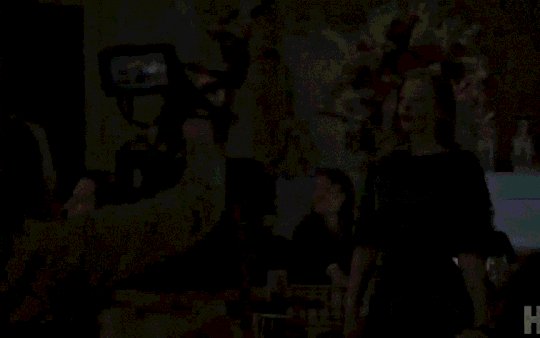


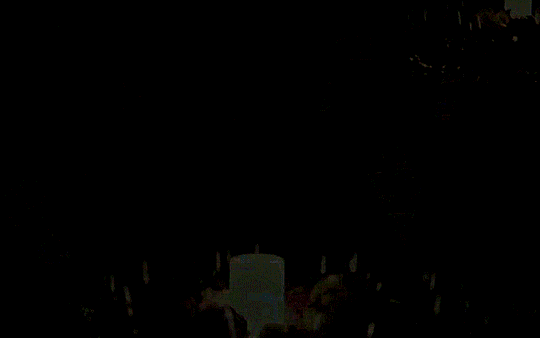
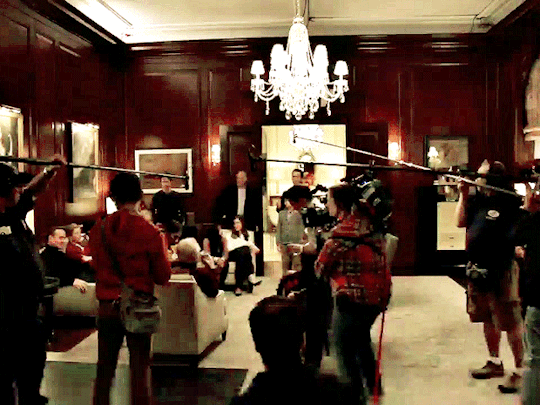

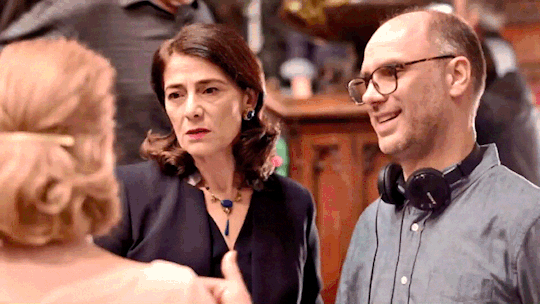

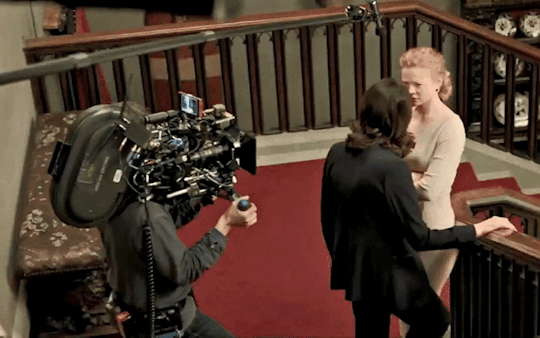

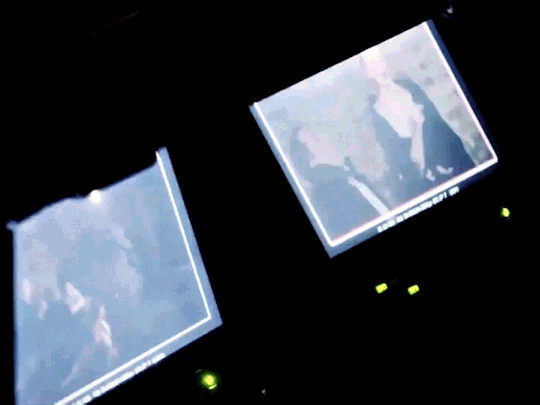
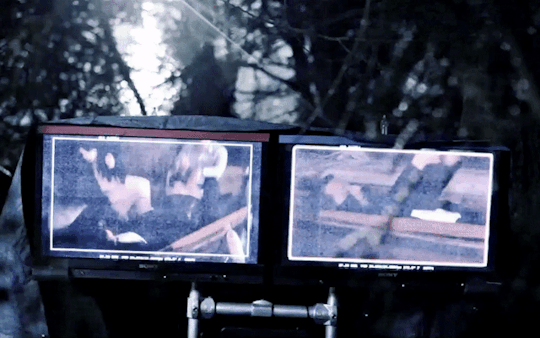





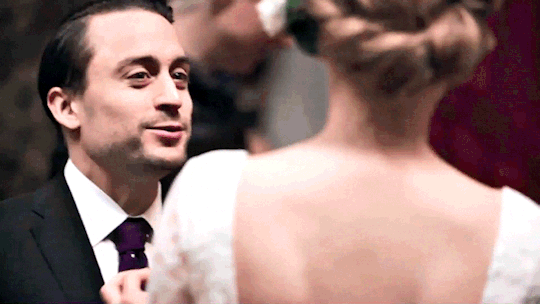






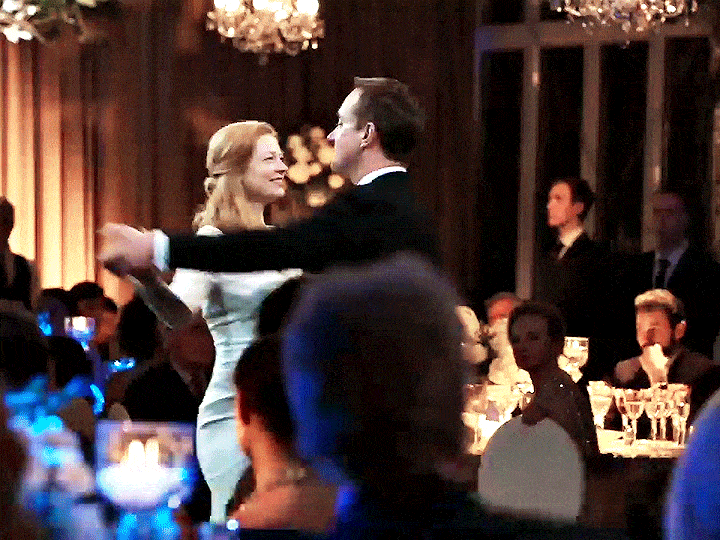
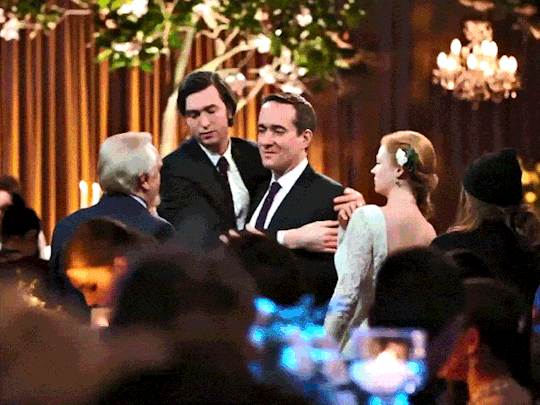

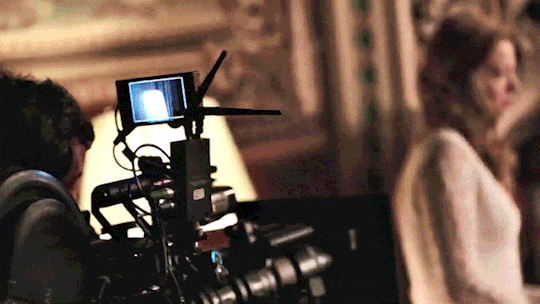
Sarah Snook as Shiv Roy | Behind the Scenes of Succession Season 1
#shiv roy#sarah snook#succession#marcia roy#hiam abbass#jesse armstrong#kieran culkin#tomshiv#matthew macfadyen#logan roy#succession season 1#behind the scenes#succession featurette
148 notes
·
View notes
Text


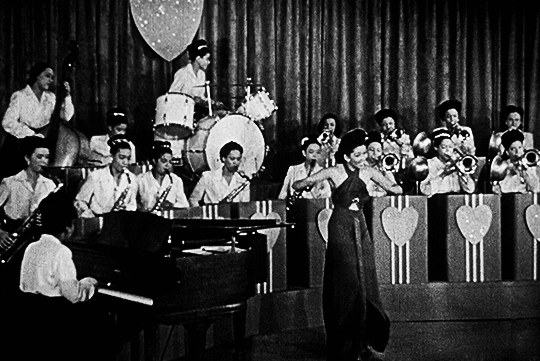
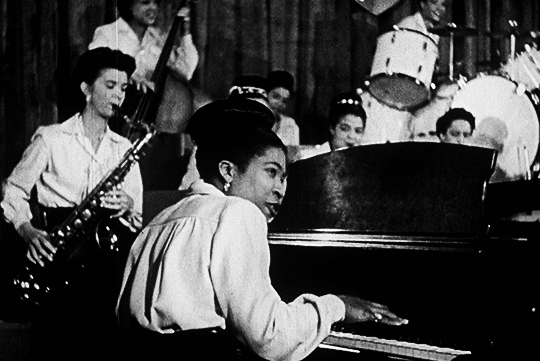
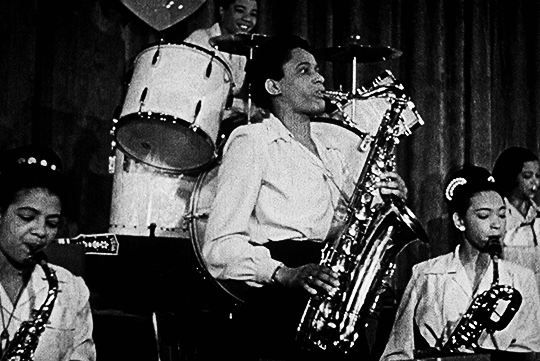

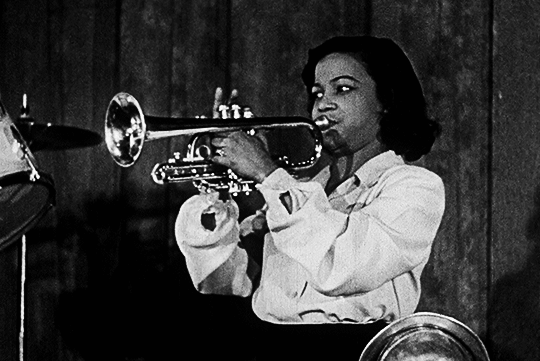

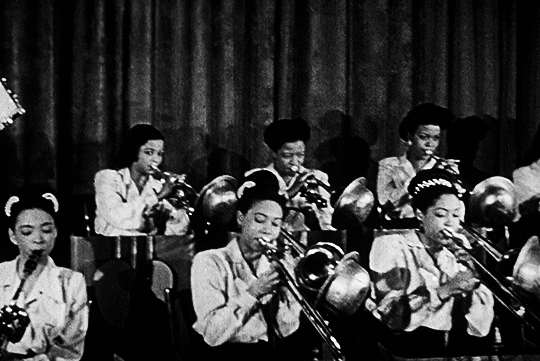
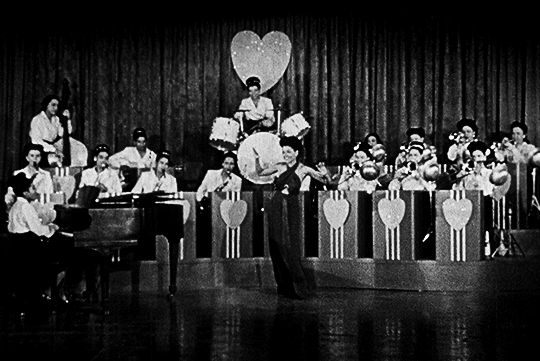
SHE'S CRAZY WITH THE HEAT — 1946 ft. The International Sweethearts of Rhythm
In 1946, William D. Alexander began the production of a series of one-reel shorts, half-hour featurettes and feature films that would serve a dual purpose. These black cast subjects would be released to theaters that welcomed African American audiences; concurrently, the music segments would be excerpted from the films and released as Soundies. Ultimately, sixteen of Alexander’s musical shorts reached the Panoram screen, spotlighting the bands of Lucky Millinder, Billy Eckstine, Henri Woode and the International Sweethearts of Rhythm. (Alexander actually produced four films with the Sweethearts, three ten-minute short subjects and one feature, although some of the performances turns up in more than one film; only three performances saw release as a Soundie.) The International Sweethearts of Rhythm grew out of a band formed in the 1930s at the Piney Woods Country Life School, an institution – in part an orphanage – for poor African American children. A member of the music department had apparently taken note of the success of Ina Ray Hutton’s Melodears and decided that an all-woman band composed of school members might lead to something special. While they performed locally, the ISR did not begin to hit its stride until it left Piney Woods and became a professional touring outfit in 1941. The band was certainly “international” in nature, and its ranks included African American, Latina, Chinese, Indian, White and Puerto Rican musicians. In 1941, Anna Mae Winburn joined the orchestra as front woman and featured vocalist. During the war years Maurice King joined the band as both arranger and band manager. Born Clarence King in 1911, King played reeds and later became a fine swing arranger. While here we recognize his composition and arrangement for the Sweethearts – he called this tune “She’s Crazy with the Heat ” – King is best known for his longtime association with Barry Gordy and Motown Records for which he served as director of artist development. He worked closely with vocal groups, teaching the singers how to voice and phrase together. “Maurice brought sophistication and class to Motown,” said session musician Johnny Trudell. By 1946, the Sweethearts was recognized as one of the finest African-American bands in jazz. They recorded for Guild and RCA Records, broadcast regularly for the Armed Forces Radio Service, and toured Europe entertaining the GIs. While much of the success was due to Maurice King’s arrangements, the band’s musicians were all strong, and a special nod must go to Viola Burnside, one of the most neglected tenor soloists of the 1940s. I chatted with my friend Roz Cron, a member of the Sweetheart’s reed section, shortly before her passing. When I thanked her for her contribution, she paused and said, “Yeah, we were one of the best, one of the very, very best.” (via Jazz on Film)
#classicfilmsource#femaledaily#filmedit#film#classicfilmedit#oldhollywoodedit#jazz#music#the international sweethearts of rhythm#she's crazy with the heat#1940s#mygifs*#soundies*
701 notes
·
View notes
Text
So that whole interaction between Ahsoka and Huyang, where they talk about Sabine's choice to help the enemy find Thrawn (in hopes that she can then find Ezra) is clearly meant to be subtext for what happened with Anakin.
I mean change the pronoun from "she/her" to "he/him", tweak some of the names and...

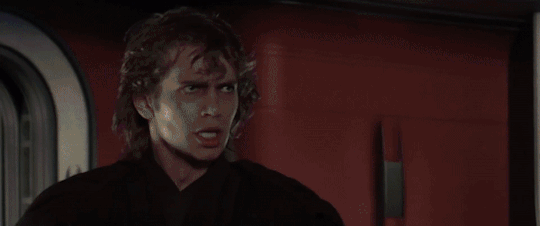
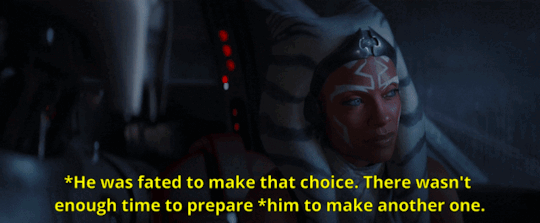

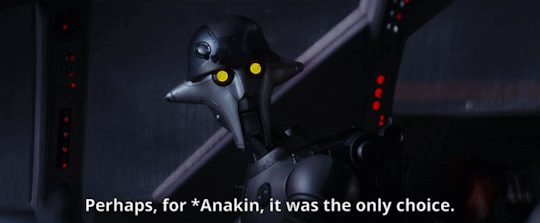
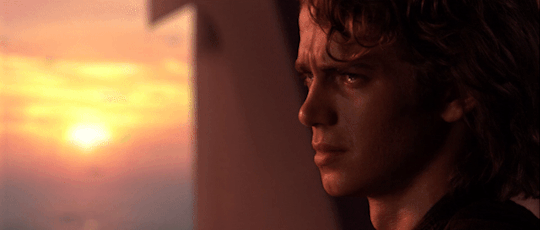
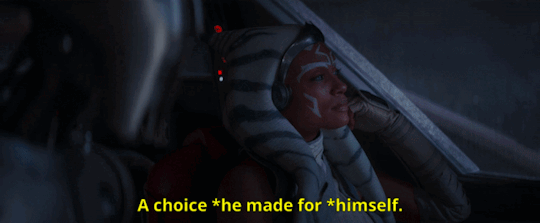
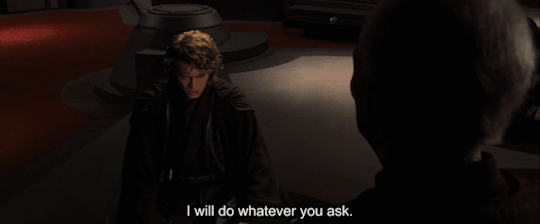
... it's just blatant.
The parallels were already clear in the previous episode, as pointed out in this post here, and it still holds true:
Sabine's struggle with attachment mirrors Anakin's.
We know Filoni's whole stance on why Anakin fell to the Dark Side: he'll usually acknowledge that Anakin was ruled by his attachments, got possessive of Padmé, but then adds:
"HOWEVER is loving that way really that bad?"
"HOWEVER he never stood a chance because Qui-Gon wasn't there to teach him properly and be the father Anakin needed."
I've already gone into why both these statements don't track with Lucas' intended narrative here and here... but I wanna touch on this notion that "Anakin wasn't trained enough to make a better choice."
He was.
You know how we know? Because we saw him overcome his attachments before.
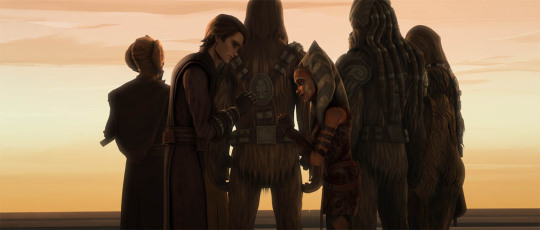
We saw him explain the theory of the non-attachment rule, before.
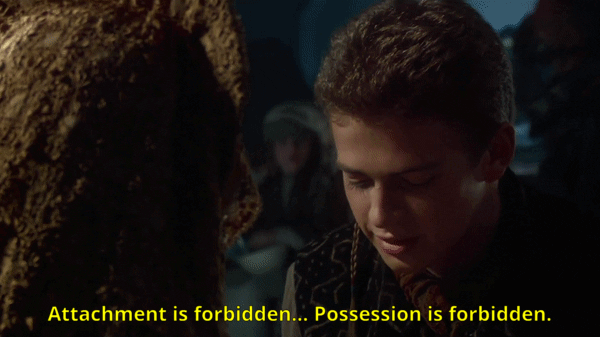
In fact, wee saw him pass down a lot of the Jedi lessons, in The Clone Wars, including being disciplined, following orders and not acting impulsively.


The issue is that - while Anakin knows the theory, even has a few minor successes applying it - he never builds the self-discipline needed to master it because... deep down... he doesn't want to.
This is partially because you got Palpatine telling him he doesn't need to, molding him into an arrogant, power-craving person... but the fact remains that Anakin made the choice himself.
Which Filoni acknowledges, sure... but not quite. The difference between his thesis and George Lucas' is that the latter picks a stance and defends it.


"He started out as a very loving and compassionate person. And as he progressed, it was his inability to control his temper, his inability to let go of things, and his quest for power that were his undoing." - George Lucas, E! Behind the Scenes - ROTS, 2005
Anakin fell because he was greedy, just like any one of us can be.
Cool. Filoni, on the other hand, doesn't seem to land anywhere.
He dances around the issue (as can be seen by the debate between Ahsoka and Huyang, with no clear winner) and merely questions whether it's as simple as that.
Clearly he wants to justify Anakin's actions to some degree... but y'know, the narrative considers those actions so reprehensible that Anakin gets friggin' burned alive for it.

"I felt it was important that we actually see that happen so that we could see the consequences of these bad things that he did. […] He forces his friends to turn against him. Which is heartbreaking." - George Lucas, “The Chosen One” Featurette, 2005
Because Anakin's actions are not meant to be justified.
It's easy to see why Filoni likes Anakin. One of the earliest tasks he had when writing The Clone Wars was humanizing a character whose sole functional purpose was to carry out a narrative about how:
"Without self-discipline, greed [can] force a character off the path to freedom." - Micael Hearn, The Cinema of George Lucas, 2005
And Anakin is a very sympathetic character.
His flaws are flaws that we all carry.
Q: Is it fair to assess Anakin is kind of cursed by his own goodness/good qualities? "I wouldn't say that’s true. He’s cursed by the same flaws, and issues that he has to overcome, that all humans are cursed with. There's a lot going on there. [...] The whole point is—and the reason I started the story where I did—is that Anakin is a normal, good kid. And how does somebody who is normal and good turn bad? What are the qualities, what is it that we all have within us that will turn us bad?" - George Lucas, Star Wars Insider #52, 2000
But narratively, Anakin is selfish.
He doesn't want to save Padmé's life, he wants to save himself from the pain of losing Padmé.
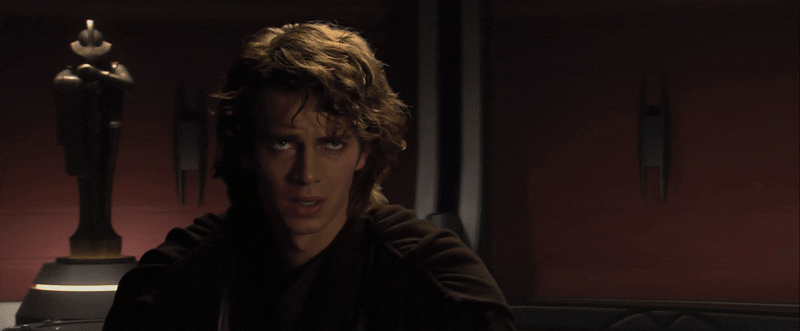
And while you're supposed to sympathize with him, you're not meant to agree with him. He's Darth Vader, the space nazi. He messes up and consequentially "leaves the Force in darkness" for 20 years, instead of ushering it towards the light in the chancellor's office, when he has the chance.
So to shift the blame and say that...
HOWEVER, Anakin didn't have the proper support system or training to make a better choice.
... when the whole point of the narrative is about taking personal responsibility and being selfless instead of selfish... well, it is missing that point.
He did know better. He just didn't want to choose better, so he convinced himself he wasn't able to.
#anakin skywalker#george lucas#dave filoni#ahsoka show#ahsoka series#ahsoka#ahsoka spoilers#huyang#sabine wren
1K notes
·
View notes
Text

The Woman and Offspring will be released together on 4K Ultra HD on August 27 via Arrow Video. Vanessa McKee designed the new cover art; the original poster is in the reverse side.
2011's The Woman is directed by Lucky McKee (May), who co-wrote the script with Jack Ketchum, based on their 2010 novel of the same name. Pollyanna McIntosh, Angela Bettis, Sean Bridgers, and Lauren Ashley Carter star.
Offspring is its 2009 precursor, directed by Andrew van den Houten and written by Ketchum, based on his 1991 novel of the same name. Pollyanna McIntosh, Art Hindle, Amy Hargreaves, and Ahna Tessler star.
Both films have been restored in 4K, supervised by their respective directors. The limited edition set also comes with a booklet. Special features are listed below.

Disc 1 - The Woman
Audio commentary with director Lucky McKee, editor Zach Passero, sound designer Andrew Smetek, and composer Sean Spillane
Audio commentary with actress Pollyanna McIntosh
Audio commentary with film critic Scott Weinberg
Audio commentary with director Lucky McKee
Dad on the Wall - Behind-the-scenes documentary filmed by director Lucky McKe’s father, Mike McKee
Interview with Lauren Ashley Carter
Malam Domesticam featurette
Meet The Makers featurette
Deleted scenes
2011 Frightfest panel with indie horror filmmakers Lucky McKee, Andrew van den Houten, Larry Fessenden, Adam Green, Joe Lynch, and Ti West
Mi Burro - 2011 animated short directed by The Woman editor Zach Passero
“Distracted” music video by Sean Spillane
Theatrical trailers
Image galleries
Disc 2 - Offspring:
Audio commentary by director Andrew van den Houten and digital colorist Matt McClain
Audio commentary by writer Jack Ketchum, director Andrew van den Houten, and cinematographer William M. Miller
Interview with director Andrew van den Houten and actress Pollyanna McIntosh
Fly on the Wall - Making-of featurette
Interview with writer Jack Ketchum
Progeny: The Birth of Offspring featurette
First Stolen’s Bailout featurette
Restoration comparison
Audition comparison
Webisodes, short featurettes used to promote the film online
Archive Easter Eggs
Theatrical trailer
Image gallery
Also included:
Booklet featuring writing by Michael Blyth, Alexandra Heller-Nicholas, and Kevin Kovelant
The Woman (Pollyanna McIntosh) is the last surviving member of a deadly clan of feral cannibals that has roamed the American wilderness for decades. When successful country lawyer Chris Cleek (Sean Bridgers) stumbles upon her whilst hunting in the woods, he decides to capture and civilize her with the help of his seemingly perfect all-American family, including his wife Belle (Angela Bettis,) and daughter Peggy (Lauren Ashley Carter). The Cleeks will soon learn, however, that hell hath no fury like The Woman scorned…
Pre-order The Woman / Offspring.
#the woman#pollyanna mcintosh#angela bettis#lucky mckee#jack ketchum#offspring#arrow video#vanessa mckee#dvd#gift#horror#sean bridgers#lauren ashley carter#art hindle#amy hargreaves
22 notes
·
View notes
Text
Long post incoming...
I guess I'll try to be more reasonable and put things into perspective.
I also happened to come out of FURIOSA earlier today, which to me felt like a nice antidote to what Hollywood tends to pump out when it comes to big franchises. A prequel that really expands the Wasteland world of MAD MAX without feeling like a Glup Shitto-fest. I was pretty much glued the whole time, astounded at what it was going for, the big swings it took and - in my eyes - greatly succeeded at. You can tell creator/director George Miller loves this world, and wanted to expand it meaningfully with both this and MAD MAX: FURY ROAD, after 30 years of the series being a trilogy. And apparently without anyone getting in his way, at that. Rare for a big action film.
Did you know Miller, who also directed the likes of... THE WITCHES OF EASTWICK, LORENZO'S OIL, BABE: PIG IN THE CITY (and pretty much was a huge part of the original BABE), the HAPPY FEET movies, and THREE THOUSAND YEARS OF LONGING... Did you know one of his favorite films is Walt Disney's PINOCCHIO? Which had a massive influence on him and his work?

Oh yeah, PINOCCHIO... The second-ever Disney animated feature film, a film designed to be like its European fairy tale-inspired predecessor - SNOW WHITE AND THE SEVEN DWARFS - but double that, with its more sprawling story and larger budget. More multiplane shots, whole scenes in the ocean, all that hand-animated, meticulously hand-painted water...
And it was the exact opposite of SNOW WHITE when first released in February 1940. While reviews were generally positive, not really as glowing as SNOW WHITE's reception, it was largely impacted by World War II breaking out across the Atlantic. It couldn't play in the European countries where SNOW WHITE made tons of money, and the money it managed to make in the ally territories - the UK and France - wasn't going to cut it. Its American gross was solid, certainly in the shadows of the huge hit that was out at the time - GONE WITH THE WIND... But again, it couldn't cover the film's astronomical costs. Unthinkable for a film, whose opening song, is pretty much synonymous with Disney today... Once a big flop, now it's absolutely definitively Disney...
The Disney studio would continue to lose a lot of money during this period. FANTASIA did not appeal to audiences, and BAMBI also lost money. Only the relatively-cheaper DUMBO managed to make back its shoestring cost, in addition to appealing to audiences more than the experimental dialogue-free epic and the more lyrical, dramatic forest tale. Disney was deep in debt, and spent the rest of the decade making and releasing movies known as "The Package Features". Anthologies composed of short films/featurettes, with some sort of loose linking device for them. Disney wouldn't return to doing a singular type of story following one set of characters until CINDERELLA, released in February 1950 to critical acclaim and great box office.
Some animation fans and historians divide the Walt years into two halves, the Golden Age covering the streak that began with the runaway success of STEAMBOAT WILLIE and ended with World War II's impact on the studio's first five feature films. (Or six, if you count the hybrid THE RELUCTANT DRAGON.) The Silver Age, covering everything thereafter up until Walt's passing, typically marked at the posthumous 1967 release of THE JUNGLE BOOK. Again, in terms of features. I'd mark it at December 1968, when the 2nd Winnie the Pooh featurette - THE BLUSTERY DAY - was released. The wartime losses took so much out of the studio, that Walt and Roy O. Disney reached some compromises, which - to some - affect the features going forward.

Films like CINDERELLA and PETER PAN avoided the elaborate multiplane effects and minute details of PINOCCHIO and BAMBI, making up for it in their striking art direction and filmmaking choices. The storytelling is also something of a shift. Few of those films attempt to wear the frightening elements of SNOW WHITE and PINOCCHIO, the kinds of scenes that Walt often got angry letters from parents over. After BAMBI, not counting the package features, the death of a major "good" character was pretty much hands off as well. For example, during production of LADY AND THE TRAMP, singer/actress Peggy Lee begged the filmmakers not to kill off Trusty at the end of the picture, following his accident with the dogcatcher wagon. Walt and co. complied. By the time you get to the '60s, Walt's final years among the living, you're a country mile from the early films. THE SWORD IN THE STONE and THE JUNGLE BOOK are very lax "characters exist" kinds of movies, the latter having some danger in the form of the impending encounter with Shere Khan. Otherwise, they are much lighter in tone, much more fun-loving, like romps.
Over the years, I've come to really appreciate those later films for the things my 20-something year-old self tended to criticize them for. When really, it's just a matter of fact. Change happened, maybe had to happen, in order for the Disney studio to survive and keep making animated feature films. Few other studios during the Golden Age of Animation could afford such a luxury. The Fleischer brothers certainly gave it a shot, with GULLIVER'S TRAVELS in 1939 and MR. BUG GOES TO TOWN in 1941, but the falling out between Max and Dave coupled with distributor Paramount's neglect of MR. BUG put a stop to that. Feature-length films would be made in other countries using techniques other than traditional animation, though some studios in America would later get in on it once again - albeit with lower-costing methods.
But when Walt was around, it was really only him producing feature-length animated films on a regular basis. And to keep going with that, and not just making more money off of only the re-issues of SNOW WHITE and such, he and his crew ultimately changed course and... Well... I'll say it, I feel they still put in the hard work on a bad day. Even the films of the '50s and '60s that I don't like as much as some others, there's still... Say, a Milt Kahl head swaggle or something great from Frank & Ollie in there. Or a great score, or a good sense of pace, the late great Robert and Richard Sherman absolutely going off with a banger song somewhere, very inspired background art, etc. No slouching! Something like THE JUNGLE BOOK is very much as important to me as PINOCCHIO.
I've come to love all of it, really, even with perceived flaws or the results of the studio changing gears. The work of the animators, artists, musicians, etc.... They pulled the weight and then some, and even the more "middling" films of decades past hold some sort of special place...

Maybe this situation applies to the apparent mandates that Disney executives are compromising Pixar with.
Pixar went for many, many years without a box office loss. THE GOOD DINOSAUR, which was made during John Lasseter's 11-year reign, was the first film to lose money for them. It was released *20 years* after TOY STORY came out, and it's their 16th overall film. I remember the media trying to chalk it up to the film's troubled production, which is a silly sentiment, because TOY STORY 2 and RATATOUILLE were similarly-rough, rocky roads. That one just... Didn't appeal, no matter what work and effort went into it, and I also think STAR WARS 7 opening mere weeks later kinda cut into it as well. It was kinda tossed off by Disney's marketing department after INSIDE OUT debuted earlier that year.
But, it was viewed as a minor dent in the armor. CARS 3 didn't really break even when released in the summer of 2017, but that was a CARS movie, so a lot of people kinda just shrugged at that. John Lasseter was then slowly ousted from the Disney company as a whole months later... Not because of that film, or GOOD DINOSAUR, but because he was exposed by the Me Too movement that erupted in fall 2017. Lasseter abdicated his leadership roles at Pixar, Disney Animation, Disneytoon, and Imagineering, right before the release of COCO that autumn. With Pete Docter taking over as CCO of Pixar in June 2018, perhaps all eyes were on him. Unlike Lasseter, Docter was only running Pixar. Not WDAS, not Disneytoon (which was swiftly shut down upon Lasseter's exit), and no major presence in the parks apparently... How would he take on such a task?
Docter, I feel, had something going there. Lasseter's Pixar became what Ken called Sunnyside Daycare in TOY STORY 3, he turned the place into a pyramid and he put himself on top. So many directors and animators exodused out of Pixar in the early 2010s, notably Brenda Chapman, who had words upon being taken off of her film BRAVE. All of Lasseter's goodwill completely vanished after it was learned that he made many women at the studio - and at WDAS - very uncomfortable, and when it was very clear that he only favored his TOY STORY colleagues and wasn't keen on letting women nor PoC direct films at his studio. Docter sought to reverse that, and to let the filmmakers tell stories that meant a lot to them. Much in the same way he, Lasseter, Andrew Stanton, Lee Unkrich, and Brad Bird did when Pixar was relatively new to making features. It truly was like old times, and I myself was very excited about that.

And it seemed like the sky was the limit... What could go wrong? ONWARD was cut right off, in its second weekend, by the pandemic. SOUL, LUCA, and TURNING RED went straight to Disney+ in the U.S. and most other territories, and their subsequent limited theatrical debuts - expectedly - didn't do great. I see that situation as similar to World War II cutting right into Disney's animated features in the 1940s, impacting the studio/distributor's ability to give them a wide release (at the time, Disney was not big enough to be their own distributor, it was RKO Radio Pictures who were handling the releases of the movies)... and the way the world is now, how expensive it is to take a trip to the movies, what a gamble it is... Animated movies aren't guaranteed smash hits anymore, unless you're something like Mario or Minions, or some entry in a beloved franchise. Remember how PUSS IN BOOTS 2 literally had to claw its way up to such a winning gross and record multiplier? If that had cost the same amount of money as ELEMENTAL had cost to make? It'd be considered a big failure.
LIGHTYEAR was Pixar's big return to theaters, a summer bow in 2022 that was part of the studio's beloved TOY STORY franchise. It opened great, too. $50m! Quite above what other animated movies had been opening with from 2021 to now... But the legs were terrible, word of mouth was sour, audiences just didn't seem to like it. A rare swing and a miss. Pete Docter pulled a "Walt Disney responding to ALICE IN WONDERLAND's disastrous release circa 1951", taking the blame for the film's box office woes. ELEMENTAL opened blah, but had incredible word of mouth. Even Disney boss Bob Iger seemed happy with its slow-burn ride to $500m at the worldwide box office, until he wasn't... Now that's a failure, along with SOUL, LUCA, and TURNING RED... Which all didn't get to enjoy full theatrical releases due to a worldwide crisis that's actually still going on...
So now, the corporate logic is... Those movies all failed because they're too "autobiographical", the filmmakers' respective catharses being told through 90min animated movies apparently doesn't appeal to audiences... and that in order to be financially successful again, Pixar needs to make films with more "general" appeal. Pete Docter is not John Lasseter, and I feel the press takes advantage of that. Docter apologizes for films not appealing, whereas Lasseter - when his CARS 2 got panned by most critics - defended critical missteps with his chest. It's as if he still ruled at the end of the day and no one could touch him - given his four leadership roles within the company, while the quieter Docter... Not so much. I get the sense that Disney execs can push him around and the press can easily label him a weak leader, while John seemed invincible. Iger, for example, was aware of his erratic, gross behavior at awards ceremonies well before Me Too caught up with the Hawaiian shirt man... And he was very concerned, but... Lasseter kept his job for another decade, almost unscathed.
I get that studios often have these sorts of "Well, we've had trouble, what should we be making then?" moments. I feel that singling out the three films that went straight to streaming during a pandemic, and another that was high budget and was operating in a much different theatrical landscape than before, is not it, though. SOUL, LUCA, TURNING RED, and ELEMENTAL were liked by most audiences. They got good to great reviews. They were all nominated for Oscar.
This isn't like how FANTASIA and BAMBI were perceived by critics and audiences in the early 1940s. The mixed-to-negative reactions to those films back then must've played a part in Walt and Roy focusing on relatively safer films in the future. For example, CINDERELLA leaned into what audiences loved about SNOW WHITE, 12 1/2 years prior, and was one of Disney's huge hits of that decade that also did exemplary in re-issues. There's a reason the two big flops of the '50s, for Disney Animation, were the more experimental films - ALICE IN WONDERLAND and SLEEPING BEAUTY. Nowadays, both of those movies are beloved and like PINOCCHIO, FANTASIA, and BAMBI... Are synonymous with Disney, often ranked among the best, cream of the crop. The time isn't always right for certain movies...
But things are often unfair in these big entertainment conglomerates, who are run by money hoarders who only think in the moment... and if Pixar's gonna try to do this "general appeal" thing, they would still have to let filmmakers have all the fun that they can feasibly have with the stories. The current iteration of Disney Animation is buckled under so much executive interference, and test screenings where 7-year-olds dictate what goes in and what doesn't, and... Well... Look at their resulting output. How they still try to do the job passionately and not merely just pass the grade. It's like I'm watching them struggle to get their creativity out on films like RAYA, STRANGE WORLD, and WISH. It's, to me, much like where things were for them circa 1980-82.
And after nearly 30 years of making features, maybe Pixar might enter such a phase themselves, as executives place the blame squarely on the filmmakers for their own failures and uncontrollable outside circumstances... Like I said, we'll have to see how they navigate this particular set of rules. Does it work out for them? Does it create movies that audiences mostly don't care for? Who knows... Maybe I myself will like the movies still, maybe I won't even notice a difference... Maybe this is will all be moot, every sentence of it... But we'll see...
9 notes
·
View notes
Text
Olivia Hussey, Teen Star of a ‘Romeo and Juliet’ on Film, Dies at 73
Her passionate portrayal of Juliet in Franco Zeffirelli’s 1968 adaptation won enduring acclaim. In 2023, she sued over the circumstances of a nude scene.

Olivia Hussey as Juliet for the 1968 movie “Romeo and Juliet.” She was only 15 when filming began. Credit...Universal History Archive — Getty Images
By Alex Traub Dec. 30, 2024 Updated 1:20 p.m. ET
Olivia Hussey, whose performance as the female lead in a 1968 film adaptation of “Romeo and Juliet” became its own Shakespearean tale, encompassing glory improbably achieved, helplessness with newfound power and memories that darkened over the years, died on Friday at her home in Los Angeles. She was 73.
The cause was breast cancer, her publicist, Natalie Beita, said.
Ms. Hussey’s lifelong association with Juliet came from how rapturously that movie was received. Much of the reaction concentrated on the decision of its director, Franco Zeffirelli, to cast two unknown teenagers as his leads. Ms. Hussey was 15 when filming began; her co-star, Leonard Whiting, was 17.
It was standard at the time to give the roles of the desperate lovers to established stars. Leslie Howard, for one, was 43 when he made his debut as Romeo in a 1936 adaptation.
What Ms. Hussey and Mr. Whiting lacked in practiced elocution they more than made up for in emotional intensity, suggesting an identification with their characters.
Mr. Whiting sprinted from Juliet’s bedroom with a wild but innocent exuberance. When Juliet’s nursemaid (Pat Heywood) counseled that Juliet go through with a pragmatic marriage to a man other than Romeo, Ms. Hussey responded with an extraordinary facial expression — wide-eyed, horrified, stupefied — suggesting that it was her first encounter with the possibility of betraying love.
In a review for The Chicago Sun-Times, Roger Ebert wrote, “I believe Franco Zeffirelli’s ‘Romeo and Juliet’ is the most exciting film of Shakespeare ever made.” He credited the film with “the passion, the sweat, the violence, the poetry, the love and the tragedy in the most immediate terms I can imagine.”
The movie grossed nearly $39 million at the domestic box office (about $350 million today) and it won Academy Awards for cinematography and costumes.

The director Franco Zeffirelli, left, with Ms. Hussey and her co-star, Leonard Whiting, at the Parisian premiere of “Romeo and Juliet.”Credit... Eustache Cardenas/Associated Press
A featurette on the making of the film captures the tenor of Ms. Hussey and Mr. Whiting’s stardom. “These are the most talked-about teenagers in the world today,” the narrator says.
Ms. Hussey traveled widely promoting the film. At one point, in Britain, she did so much dancing at a dinner with Prince Charles that she took her shoes off, stretched her legs across his lap and received a royal foot massage.
Yet in the years to come Ms. Hussey did not have another big role that earned both box-office success and critical acclaim. She spent much time commemorating her role as Juliet.
One part of the movie was remembered for something other than artistry: a brief scene in which Romeo and Juliet wake up nude in bed together. The camera lingers on Mr. Whiting’s buttocks and registers a flash of Ms. Hussey’s breasts.
Mr. Ebert castigated those who were scandalized by the scene — “A lot of fuss has been made about the brief, beautiful nude love scene,” he wrote — and Ms. Hussey seemed initially to feel the same way, describing Mr. Zeffirelli as a father figure whom she would have liked to work with on all of her movies.
But in her 2018 memoir, “The Girl on the Balcony,” she was more ambivalent.
With Mr. Zeffirelli’s assurance, she wrote, she had thought that she would be clothed in the scene, until she found herself having makeup applied “head to toe,” prompting what she called a “small panic attack.” One “dirty old man” on the crew, she wrote, had to be removed from the set.
“Nobody my age had done that before,” she told Variety in 2018, referring to the nude scene. Yet she added, “It was needed for the film.”
During her press tour for the book, she told Fox News that the scene “was done very tastefully” and “wasn’t that big of a deal.” Mr. Zeffirelli wrote an adoring foreword to the book.
Ms. Hussey’s attitude took another turn in December 2022, when she and Mr. Whiting sued Paramount Pictures, the film’s distributor, seeking damages of up to $500 million, claiming that they had been forced to appear nude and that the movie constituted “child pornography.” The suit was prompted by a California law that temporarily suspended the statute of limitations on claims of child sexual abuse.

Ms. Hussey in 2018 promoting her memoir, “The Girl on the Balcony,” in Los Angeles. Credit... Brandon Williams/Getty Images
A judge threw out the suit in May 2023, ruling that the scene was not pornographic.
New York magazine reported that at the time of the suit Ms. Hussey was $22,000 in debt. In an interview with Variety, she said that she and Mr. Whiting had each received only 1,500 British pounds (roughly $35,000 today) for their performances.
“Looking back on all of that, Leonard and I, we felt exploited throughout,” she said.
Olivia Osuna was born on April 17, 1951, in Buenos Aires to Andreas and Joy Hussey. Her father was a tango singer. Her parents divorced when Olivia was 2, and her mother took her and Olivia’s brother, Andrew, to her native England, where she worked as a legal secretary in London. The children used their mother’s surname.
Joy Hussey was an observant Roman Catholic, and Olivia would walk around her home with a towel on her head, pretending to be a nun, she recalled. She realized that what she liked was not the idea of being a nun but the pretending to be one. She started attending drama school as a little girl.
In 1966, Olivia starred in a stage adaptation of Muriel Spark’s novel “The Prime of Miss Jean Brodie” alongside Vanessa Redgrave. She got the role of Juliet after two auditions.
Ms. Hussey played the Virgin Mary in another Zeffirelli film, “Jesus of Nazareth” (1977), and the titular role in “Mother Teresa,” a 2003 television biopic. She also starred in “Black Christmas” (1974), a horror movie that was panned at the time but that later earned Ms. Hussey the reputation as the “prototype” of the last female survivor of a slasher film, as The New York Times reported in 2015.

Ms. Hussey in 2018 at the TCM Classic Film Festival Opening Night Gala in Hollywood. Credit... Tara Ziemba/WireImage, via Getty Images
In later interviews, she said that the success and hoopla surrounding “Romeo and Juliet” had exhausted her, causing her to turn down movie roles opposite John Wayne and Richard Burton and to focus instead on her personal life.
Ms. Hussey’s first three marriages ended in divorce. She is survived by her husband, David Eisley; a son, Alexander Martin, from her first marriage, to Dean Paul Martin, the son of the singer Dean Martin; another son, Maximillian Fuse, from her third marriage, to Akira Fuse, a Japanese pop star; a daughter, India Eisley; her brother; and a grandson. She was diagnosed with breast cancer in 2008.
Mr. Whiting, a lifelong friend of Ms. Hussey’s, once sent her a darkly comic screenplay he wrote in which Romeo and Juliet live on after their youth. Ms. Hussey responded that she could not play the part, she told Variety in 2018, for the same reason that she never went out in sweatpants: She wished to keep alive the public image of herself as Shakespeare’s Juliet.
That was how she met Mr. Eisley. He saw her at a delicatessen and introduced himself as someone who had seen her performance in “Romeo and Juliet” 50 times. He turned out to know every line of the play.
“I couldn’t resist him,” Ms. Hussey told the British newspaper The Telegraph in 2002. “I am such a die-hard romantic. I guess a part of me thinks I am Juliet.”
John Yoon contributed reporting. Alex Traub works on the Obituaries desk and occasionally reports on New York City for other sections of the paper. More about Alex Traub
#The New York Times#Franco Zeffirelli#Romeo and Juliet#Olivia Hussey#Muriel Spark#John Yoon#David Eisley#Alexander Martin#Dean Paul Martin#Maximillian Fuse#Akira Fuse#India Eisley
2 notes
·
View notes
Text


Forty Days of Frankenstein, Day Thirty-nine: One of the big Frankenstein moments of 2012 was the feature-length film of Frankenweenie, a property that began life (unlife?) as a live-action featurette that originally got Tim Burton fired from Disney back in 1984 because they thought the film was "too scary." Its later success on home-video brought about a reassessment that led to this stop-motion love letter to the old black-and-white monster movies of Universal Studios. Representing the Frankenstein Monster and his bride are undead Good Boy Sparky and his girlfriend Persephone. If you haven't seen the movie, see it, it's a delight:
3 notes
·
View notes
Text
Aquaman and the Lost Kingdom will soon make a splash on home video as the final DC Extended Universe flick looks set to become available on home video in time for the spring.
Per ComicBook.com, T he Lost Kingdom will be available on Blu-ray, DVD and 4K UHD on Mar. 12. An exclusive clip from the home release was included in the report, showing Arthur Curry (Jason Momoa) and Orm Marius (Patrick Wilson) attempting an unlikely escape. The news comes after it was confirmed the Aquaman sequel would make its digital debut earlier than anticipated as the DCEU blockbuster becomes available for streaming on Jan. 23, just over a month after it opened in theaters.

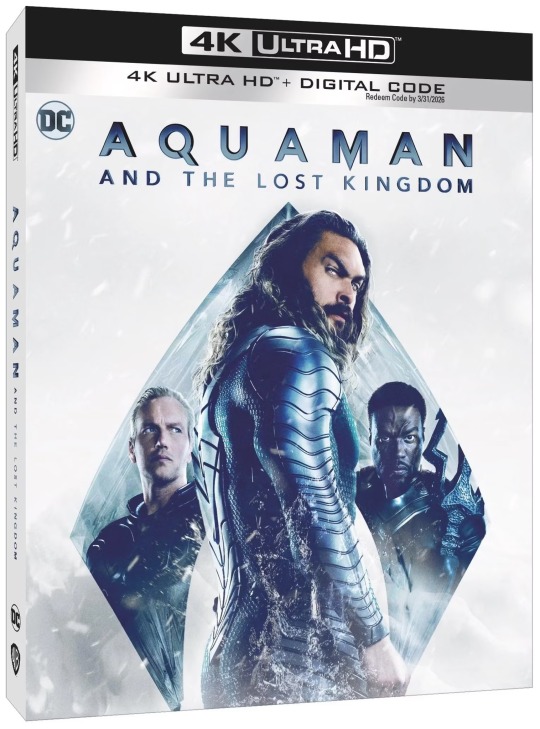
The home video edition of The Lost Kingdom boasts several bonus features, including Atlantean Blood Is Thicker Than Water, exploring the dynamic between Arthur and Orm. Along with the digital release, the home video version also includes a behind-the-scenes documentary with director James Wan exploring how The Lost Kingdom came together, a featurette chronicling the Black Manta (Yahya Abdul Mateen II) and other tidbits about key locations and sequences in the sequel.
The DCEU Ends With Aquaman and the Lost Kingdom
The Lost Kingdom marked an up-and-down end to the ill-fated DCEU, following up from the commercially successful Aquaman, which grossed over $1.15 billion worldwide. The Lost Kingdom has earned over $378 million in global ticket sales against a budget of up to $215 million, with the film reportedly needing to make more than $400 million at the box office to break even. Thanks to its overseas appeal, The Lost Kingdom easily surpassed all other DCEU films released in 2023, including Shazam! Fury of the Gods, The Flash and Blue Beetle. The sequel is closing in on Black Adam, which is next on the DCEU box-office charts at $393 million.
Also featuring Amber Heard, Dolph Lundgren and Nicole Kidman, The Lost Kingdom was panned by critics, receiving a 34% critical rating, though 81% of audience members liked the movie. The likelihood of Aquaman 3 seems low considering fan demand to see the film series has diminished. Wan insisted fan demand had to be high to ensure a potential threequel came to fruition.
The Aquaman franchise is also in jeopardy given the potential of Jason Momoa switching characters in the new DCU. Momoa has long been linked to playing a live-action Lobo in the DCU and has long been a fan of the comic book character, admitting he wants to portray the chainsmoking mercenary.
Bonus Features Revealed
The home video release will contain the following bonus features:
Finding the Lost Kingdom: Go behind the scenes as director James Wan reveals how he and the cast and crew pulled off their biggest endeavor yet, an epic sequel to the largest grossing film in the history of DC.
Aquaman: Worlds Above and Below: When the filmmakers set out to create a sequel that eclipsed the original in scale and scope, they knew they would have to send Arthur and the rest of the cast to all kinds of new wild and wonderful worlds both above and below the sea.
It's a Manta World: Black Manta is more powerful than ever now that he has discovered the Lost Kingdom of Necrus and taken possession of the Black Trident. From inspiration to execution, filmmakers reveal how they leveled Black Manta up to the realm of supervillains.
Necrus, The Lost Black City: Ages ago the great battle for the earth took place here, in this legendary lost Atlantean city. Discover how the filmmakers created the Black City from its "surface city" concept and its inhabitants: Undead Necrusians (Zombies), to its execution.
Escape from the Deserter World: From idea to execution, explore how the filmmakers created this barren desert landscape and the Deserter Prison, how its creatures and inhabitants were brought to life, and how they planned and executed the daring Orm "breakout" sequence.
Brawling at Kingfish's Lair: The Citadel is the last frontier of the ocean, a deep trench filled with sunken old ships, stacked high like a rusty city. From concept to completion, discover Kingfish's Lair, a bar within, where the worst of the worst hang out.
Oh TOPO!: The Tactical Observation and Pursuit Operative Octopus is a living legend and all-time fan favorite. Director James Wan and the filmmakers discuss the decision behind bringing TOPO back to the sequel and its promotion to Arthur's on-screen sidekick.
The Lost Kingdom hits digital on Jan. 23 and will be available via home video on Mar. 12.
Source: ComicBook.com
#dc#dc comics#dc extended universe#dceu#aquaman#aquaman 2#aquaman and the lost kingdom#jason momoa#cbr#warner bros#dc studios
2 notes
·
View notes
Text
After being released on PVOD some weeks ago, director M. Night Shyamalan’s latest thriller, Knock at the Cabin, is all set for a physical home video release. The apocalyptic thriller, which had a moderately successful run at the box office, will be released 4K Ultra HD, Blu-ray™ and DVD on May 9 from Universal Pictures Home Entertainment. The home video release will be accompanied by over 40 minutes of bonus features, including deleted scenes and featurettes.
The film will also be available on Universal’s in-house streaming service Peacock from March 24.
Here are more details about the bonus features for the physical media release:
Deleted Scenes
They Need Some Time
Going to Church
Enjoying the Sun
Leonard Explains
Chowblaster Infomercial - Enjoy an extended cut of the TV infomercial from the film that features an appearance by M. Night Shyamalan himself.
Choosing Wisely: Behind the Scenes of Knock at the Cabin - Examine what drew M. Night Shyamalan to adapt this terrifying story, and how the relationships between characters were unlike any this ensemble cast had ever played before.
Tools of the Apocalypse - Explore the creation of some of the film’s most terrifying props and learn why they play such an important role in the story.
Drawing a Picture - See how M. Night Shyamalan envisions his shots in advance of ever turning on the camera, through his extensive use of storyboards.
Kristen Cui Shines a Light - Take a closer look at actress Kristen Cui’s dynamic performance as Wen in her film debut.
12 notes
·
View notes
Text
last night i dug up the mini-documentary that was on the special features of the 2007 alvin and the chipmunks dvd and not only realized that every detail of that featurette is stamped into my memory, but just. marveled at how ross jr and janice have managed to keep the franchise alive for so many decades. thats not to say what they're making is great (the cgi movies are successful but were painful, naked attempts to stay hip and relevant, and the nick series is average at best) but their ability to keep ross sr's characters alive without handing the chipmunks over to a mega-corporation is admirable. not to say that id be surprised if they eventually sold the chipmunks off to a big media company, but its crazy how they've at least somewhat kept up with the times and kept the business in the family.
#syd squeaks#I suppose vanessa would inherit the company next?? she works on the show with her parents so idk#im just worried because ross and janice are getting up there in age and I care too much about what would become of aatc#aatc
12 notes
·
View notes
Text




Sarah Snook as Shiv Roy | Behind the Scenes of Succession Season 2
#shiv roy#sarah snook#succession#kendall roy#logan roy#succession season 2#behind the scenes#succession featurette
106 notes
·
View notes
Text
No one, besides maybe Quentin Tarantino, has done more to promote shooting on film in our current moment than Christopher Nolan. With "Oppenheimer," the filmmaker outdid himself, shooting his epic three-hour biopic on IMAX 70mm and creating a reel of film that measured 11 miles in length.
As well as promoting film as a viable format in a time where digital dominates movie-making, "Oppenheimer" had its IMAX run extended, seemingly proving that Nolan's efforts were worthwhile. The director even had an entirely new black and white IMAX film invented specifically for his adaptation of Kai Bird and Martin J. Sherwin's J. Robert Oppenheimer biography, "American Prometheus." Whereas previously, Nolan had used IMAX for specific scenes in his films, the entirety of "Oppenheimer" was shot on large-format film (on IMAX 65 mm and 65 mm large-format film), which not only proved useful in showcasing such triumphs as recreating a nuclear explosion without the use of any CGI but provided the director with a unique opportunity to immerse audiences in more intimate moments.
In a behind-the-scenes featurette, Nolan talked about using the "highest quality imaging format that's ever been devised" as a way of taking audiences "into [Oppenheimer's] experience" and achieving a "level of immersion that you can't get from other formats." Cinematographer Hoyte van Hoytema, who's worked with Nolan since 2014's "Interstellar," added:
"IMAX is a format of spectacle and it's made for vistas and for the grandeur of it but I got very curious to discover this as an intimate format. The face is like a landscape there's a huge complexity and a huge depth to it. How can we get this camera closer to people? How can we get this medium to work also as a very intimate medium?"
Which is all well and good. But there was one particular problem the crew didn't necessarily foresee.
The one major issue with using IMAX cameras
"Oppenheimer" has already proven a box office success, soaring past $400 million after just its second weekend in theaters. For a film that features a hell of a lot of men talking sternly in offices, that's pretty impressive. What makes those seemingly drab scenes interesting, however, is not just the gravity of the conversations being had, but the way in which Christopher Nolan and Hoyte van Hoytema treat them as cinematic moments as worthy of large-scale presentation as the Trinity Test itself.
Unfortunately, IMAX cameras aren't the most practical things. In order to shoot on 70mm film, the cameras have giant mags attached, which makes it quite difficult to maneuver them in the often cramped environs of Nolan's "Oppenheimer." The security clearance hearings, for example, which were shot in a real office rather than on a soundstage, required star Cillian Murphy, the various arbitrators, and multiple witnesses to cram into a small room along with the IMAX cameras — something which Murphy claimed to found "very emotional and heavy, but in a brilliant way."
What you might not think of in these instances, however, is how difficult it was for the sound tech to do his job. As it turns out, those giant IMAX cameras aren't the quietest. As Vulture reports, Benny Safdie, who plays Hungarian physicist Edward Teller, "thought something had gone wrong" the first time he heard one of the cameras being fired up. As Hoytema explained to the outlet, "It's a machine that can pull 24 medium-format photography frames per second through a big gauge. And if you have a camera that sounds like a little diesel engine, it's very hard to create some sort of very tender, sensitive, quiet, intimate moment."
It's a Nolan thing
There's something quite funny about Christopher Nolan planning to excavate the most intimate moments in J. Robert Oppenheimer's life, then arriving on set and firing up a giant piece of tech that sounds like some sort of farming equipment. You can hear the cameras in action in various YouTube clips, and they do indeed sound like a "diesel engine," to use Hoyt van Hoytema's phrase.
But while their unusual loudness might have been distracting, the cameras also provided benefits beyond being able to capture the clearest image possible. Robert Downey Jr., who plays chairman of the Atomic Energy Commission Lewis Strauss, recalled shooting a scene in the back of a car, which required him to share the small space with an IMAX camera, and found the practicality of the whole thing a revelatory experience. He said:
"I was sitting in the back of a '47 Packard with an IMAX mag on my lap trying to get this driving shot. And I just felt like I went back to some origins of great cinema school, because these lenses are coming at you and they're this close and it wakes you up."
Using these intrusive yet immersive cameras was really just the culmination of Nolan's previous efforts to preserve practical filmmaking efforts in his work. "Oppenheimer" was the first time he'd used IMAX cameras for an entire film, which alongside his insistence on not using CGI for the Trinity Test and the numerous other practical effects he used, is just another reason "Oppenheimer" is the most Christopher Nolan film ever made.'
#Christopher Nolan#IMAX#Oppenheimer#Lewis Strauss#Robert Downey Jr.#American Prometheus#Kai Bird#Martin J. Sherwin#Hoyte van Hoytema#Edward Teller#Benny Safdie
2 notes
·
View notes
Text
feeling pure relief that the old man is fucking finally in the ground, weeping abt the mundanity and inescapability of death and how painful it is to watch a family used to fracturing and self-imposed isolation try to reach for each other in complicated grief, humorlessly pissed at ppl who have i guess never read a book being weirdos abt jeremy string’s use of the very normal, performing arts industry-specific word “dramaturgically” in the post-ep featurette. This Is The Succession S4E03 Experience
4 notes
·
View notes
Text

Walt Disney's Treasury of Classic Tales is an American Disney comic strip, which ran on Sundays in newspapers from July 13, 1952, until February 15, 1987.[1] It was distributed by King.
Features Syndicate. Each story adapted a different Disney film, such as Darby O'Gill and the Little People, Peter Pan, or Davy Crockett. It was run in relatively few papers, with 58 in 1957 [2] and 55 in 1966, [3] and was principally a vehicle for promoting new and re-released
Disney films. [4] From March 8 to June 18, 1950, Disney distributed a limited-time Sunday strip adaptations of their new animated feature Cinderella, written by Frank Reilly, with art by Manuel Gonzales and Dick Moores. [5] The same team followed the next year with Alice in Wonderland, which ran from September 2 to December 16, 1951.[6] Judged a success, the experiment was turned into an ongoing feature in 1952, beginning with The Story of Robin Hood.
The strip featured a wide variety of Disney stories. The animated features adapted for the strip include Peter Pan (1953), Lady and the Tramp (1955), Sleeping Beauty (1958), The Sword in the Stone (1963) and The Jungle Book
(1968). Classic Tales also featured animated shorts, including Lambert the Sheepish Lion
(1956) and Ben and Me (1953), and featurettes like Peter & The Wolf (1954) and Winnie the Pooh and the Honey Tree (1966s). AND
2 notes
·
View notes
Text

African American audiences were generally ignored by the major motion picture studios in the first two decades of the 20th century. Demand for films aimed at Black theaters in both the South and larger northern cities prompted the formation of several “Black” motion picture production companies. Most of these Black-owned enterprises were outside of southern California. Ebony Films and the William Foster Studio were based in Chicago. The Norman Film Company was formed in Jacksonville, Florida. Others like Peter P. Jones Photoplay Company and the Afro-American Film Company were founded in the Midwest.
Sensing a market, major Hollywood studios like Fox and Paramount eventually created so-called race film units in the late 1920s. They produced all-Black-cast movies that they shaped to appeal simultaneously to white and African American audiences.
The Lincoln Motion Picture Company in Omaha, Nebraska is considered the first all-Black movie production unit in the country. Its entire output was aimed directly at African American viewers. Founded in 1916 by brothers Noble and George Johnson and soon relocated to Los Angeles, the company made and distributed five films, which were generally limited to “special showings” for African Americans in churches and small assembly halls. Production expenses and minimal sales limited their ability to create additional films. The brothers went their separate ways. Their lack of long-term success, however, was only prologue to a burst of activity by small, all-African American, filmmakers that would grow enormously by the mid-1940s, when hundreds of movies (from musical featurettes to longer films) would proliferate not only in southern locations but in larger northern cities. #africanhistory365 #africanexcellence
0 notes
Text
Blu-ray Review: The Mexico Trilogy
Possibly one of the most influential books for me as a budding filmmaker was director Robert Rodriguez's 1995 book Rebel Without a Crew, in which he outlined how he made his debut feature film El Mariachi, which he made in Mexico on 16mm with a $7,000 budget. You can't help but feel inspired by his passion and creativity. When the film was released in 1993, it got a theatrical release and the big thing about it was that it was made for $7,000. Between that, Kevin Smith making Clerks for $27,000 and Ed Burns making The Brothers McMullen for $20,000, it was an era of films and filmmakers that made me feel like "hey, I can do this too"! The modest success of that first film lead to the sequel Desperado on a bigger budget of $7 million (way up from $7K). After making several more films including From Dusk 'Til Dawn and the Spy Kids trilogy, Rodriguez finished the trilogy with Once Upon a Time in Mexico with a budget of $29 million. Arrow recently released a 2024 blu-ray edition of The Mexico Trilogy.

trilogy set cover
In El Mariachi (1993), the title character (Carlos Gallardo) arrives in a small town in Mexico with his guitar case in hand and soon a case of mistaken identity happens when locals believe he is an escaped convict with a guitar case filled with guns. In Desperado (1995), the title character (now played by Antonio Banderas) continues his search for love (a young Salma Hayek literally stops traffic) and revenge. In Once upon a Time in Mexico (2003), El Mariachi stops a failed coup attempt on the President of Mexico as a CIA agent (Johnny Depp) is on his tail.

all three movie posters
Looking back at these movies it is no surprise that Rodriguez has become an in-demand action director, notably the Sin City movies, the Machete movies and Planet Terror (his segment of Grindhouse). Rodriguez has definitely made better movies than these, but it is cool to see that beginning and frenetic energy he brought to this series. But going back to the original El Mariachi DVD, I always found it to be so inspirational and all of these blu-rays include 2024 featurettes too. This is literally like a blu-ray film school to hear him interviewed, give his Ten Minute Film School, commentaries and more. Rodriguez is a unique filmmaker in that for most of his films he has directed, he also wrote, produced, edited, shot, and in some cases was the music composer, sound mixers, steadicam operator, visual effects supervisor and more. With a lot of indie filmmakers they wore many hats early on, but did less as their budgets got bigger, but for him he kept that multi-tasking. Quentin Tarantino called him one of the top 3 directors who also edit their own films (along with Sergei Eisenstein and Russ Meyer if you're curious). Of these these films, I still think El Mariachi is the best with Desperado having some fantastic set pieces and Once Upon a Time... is fun but feels a little redundant of the previous films. But for a trilogy, this is one of the greats of indie film history and worth watching and re-watching for aspiring filmmakers.
For info on the Arrow Video release
The Mexico Trilogy: 4.5 out of 5 stars
El Mariachi: 5 out of 5 stars
Desperado: 4.5 out of 5 stars
Once Upon a Time in Mexico: 3.5 out of 5 stars
#the mexico trilogy#robert rodriguez#el mariachi#desperado#once upon a time in mexico#blu ray review#dvd review#film geek
0 notes